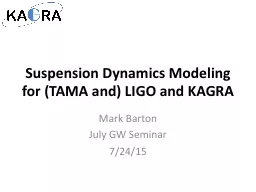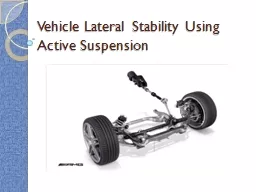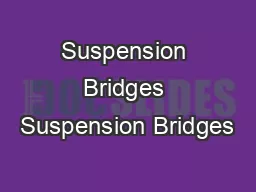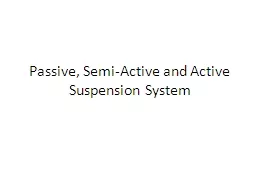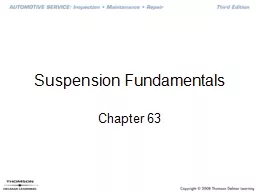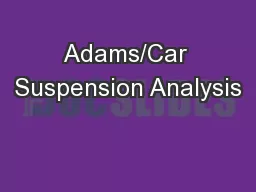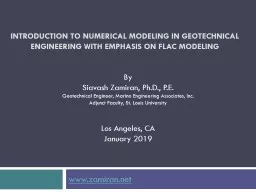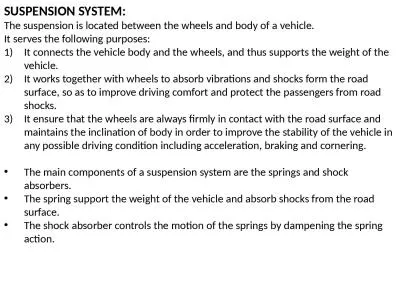PPT-Suspension Dynamics Modeling for
Author : min-jolicoeur | Published Date : 2016-03-17
TAMA and LIGO and KAGRA Mark Barton July GW Seminar 72415 Prehistory Started modeling the Xpendulum I developed for TAMA300 at ICRR 19937 Originally Mathematica
Presentation Embed Code
Download Presentation
Download Presentation The PPT/PDF document "Suspension Dynamics Modeling for" is the property of its rightful owner. Permission is granted to download and print the materials on this website for personal, non-commercial use only, and to display it on your personal computer provided you do not modify the materials and that you retain all copyright notices contained in the materials. By downloading content from our website, you accept the terms of this agreement.
Suspension Dynamics Modeling for: Transcript
Download Rules Of Document
"Suspension Dynamics Modeling for"The content belongs to its owner. You may download and print it for personal use, without modification, and keep all copyright notices. By downloading, you agree to these terms.
Related Documents

